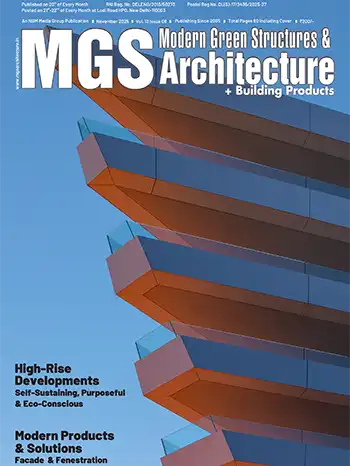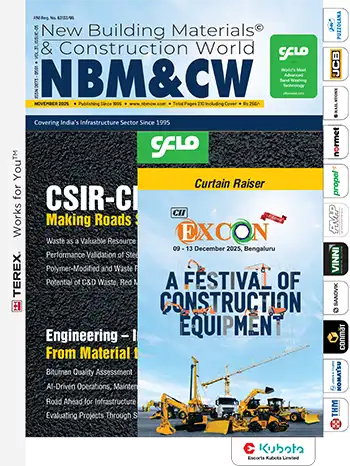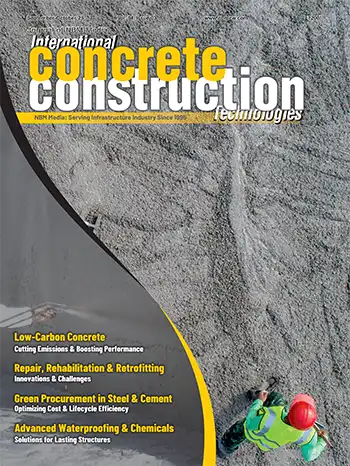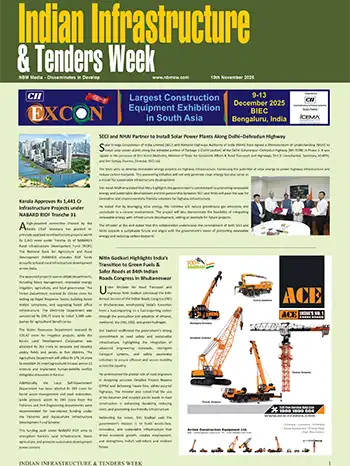Anuja Gadekar - Senior Analyst, Technology Research & Advisory, Aranca
During the inauguration of the National Workshop on “Recent Developments in Recycling and the Use of C&D Waste in the Construction Sector” in 2024, Shri Hardeep Singh Puri, the Minister of Housing & Urban Affairs and Petroleum & Natural Gas, emphasized that India generates an estimated 150 to 500 million tonnes of construction and demolition (C&D) waste annually. Improper management of this waste leads to severe environmental consequences, including air, water, and soil degradation.
For instance, in 2016, construction dust accounted for nearly 30% of Delhi’s air pollution, as per the Delhi Pollution Control Committee (DPCC). Inefficient material usage in construction leads to more waste generation, along with increasing costs, depleting vital resources, and boosting carbon emissions. These issues highlight the urgent need for the construction industry to embrace sustainable practices that minimize environmental impact and improve resource efficiency.
The push for sustainable construction practices has spurred the development of various innovative methods to reduce waste and improve material efficiency. Following are the key strategies transforming the construction industry in India:
Lean Construction Techniques
Lean Construction aims to optimize project workflows by eliminating inefficiencies, thereby minimizing excess materials and waste. Just-in-Time (JIT) Inventory Management, one of the lean construction techniques, is used for controlling material flow and reducing waste. Major firms, such as Larsen & Toubro (L&T) and Tata Projects, have successfully implemented this technique in large-scale construction projects (e.g., metro systems, highways). JIT ensures materials are delivered precisely when required, helping to reduce storage costs, prevent spoilage, and minimize surplus inventory.The shift toward sustainability through waste reduction strategies and enhancing material efficiency is not just a trend; it represents the future of the construction industry.
Anuja Gadekar
Design for Minimal Waste
Designing for waste reduction encourages the use of modular and prefabricated designs to minimize material offcuts, thereby reducing excess trimming and cutting. This approach not only decreases on-site waste but also improves quality control. KEF Infra is at the forefront, producing precast concrete and modular rooms to boost precision and speed up construction. Additionally, Katerra India utilizes cross-laminated timber (CLT) and AI technologies to enhance safety and reduce waste, enhancing the efficiency and sustainability of the construction process.Use of Sustainable and Recycled Materials
Integrating sustainable and recycled materials into construction projects is another essential strategy. By using reclaimed wood, recycled concrete, and repurposed steel, construction companies can reduce the need for new raw materials, conserve valuable resources, and achieve significant environmental benefits. Reliance Infrastructure and UltraTech Cement are lowering their carbon emission by incorporating recycled materials, fly ash, and slag, into their cement production. Similarly, Godrej Construction has adopted prefabricated bathroom pods, wall panels, and recycled concrete to minimize waste, supporting the shift toward a circular economy and reducing reliance on virgin materials.Efficient Waste Segregation and Recycling
Implementing effective waste segregation and recycling systems at construction sites is essential for improving recycling rates and reducing landfill waste. Many companies, including Lodha Group and Shapoorji Pallonji, have set up on-site sorting stations that make it easier to separate recyclable materials. In addition, Reliance Infrastructure and Shapoorji Pallonji utilize mobile crushing units to recycle concrete directly at construction sites, reducing the need for off-site transport and lowering carbon footprints.Circular Economy in Construction
The circular economy concept is gaining momentum in the construction industry to minimize waste and conserve resources by focusing on reusing and recycling materials. This method not only lessens environmental impact but also promotes sustainability. Companies, including Godrej Construction and Hindustan Construction Company (HCC), are actively recycling concrete and salvaging steel from demolition sites, ensuring these materials are reused in future construction projects. Similarly, L&T is leading the way in using eco-friendly materials such as fly ash and slag, thereby further reducing the environmental impact of building and construction.Smart Construction Technology
The adoption of advanced technologies such as Building Information Modeling (BIM) is significantly improving material efficiency and minimizing waste. BIM allows for precise material planning, ensuring accurate resource usage and reducing excess consumption. Tata Projects and Shapoorji Pallonji use BIM in the construction process to detect design clashes beforehand to reduce wastage of material and save time. Additionally, AI-driven optimization tools are being utilized to create efficient cutting patterns and schedules, further enhancing management of construction material and minimization of waste.As these technologies are broadly adopted, they will lead to a new era of construction that prioritizes sustainability, lowers costs, and offers significant benefits to the economy and the environment. These innovations will not only make construction projects more cost-effective but also contribute to a cleaner, healthier planet.
















